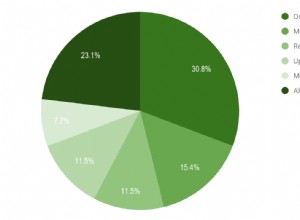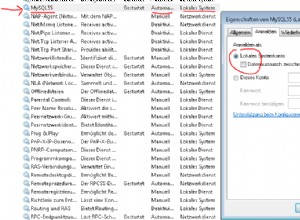Esta es una forma de raw-sql para sacar lo que quieres, creo:
select * from articles_users where article_id in (select articles.id from articles inner join articles_users on articles_users.article_id = articles.id where user_id = 1) and user_id = 2;
Donde puede sustituir las identificaciones de usuario en Rails:
ArticlesUser.find_by_sql(["select * from articles_users where article_id in (select articles.id from articles inner join articles_users on articles_users.article_id = articles.id where user_id = ?) and user_id = ?", @user1.id, @user2.id])
O para múltiples identificaciones::
ArticlesUser.find_by_sql(["select * from articles_users where article_id in (select articles.id from articles inner join articles_users on articles_users.article_id = articles.id where user_id = ?) and user_id IN (?)", @user1.id, [@user2.id,@user3.id]])
Entonces, a partir de datos de muestra (de sus otras preguntas):
mysql> select * from articles_users;
+----+---------+------------+
| id | user_id | article_id |
+----+---------+------------+
| 1 | 1 | 1 |
| 2 | 1 | 2 |
| 3 | 1 | 3 |
| 4 | 2 | 1 |
| 5 | 2 | 2 |
| 6 | 3 | 1 |
| 7 | 3 | 3 |
| 8 | 4 | 4 |
+----+---------+------------+
8 rows in set (0.00 sec)
Devolverá valores así:
mysql> select * from articles_users where article_id in (select articles.id from articles inner join articles_users on articles_users.article_id = articles.id where user_id = 1) and user_id = 2;
+----+---------+------------+
| id | user_id | article_id |
+----+---------+------------+
| 4 | 2 | 1 |
| 5 | 2 | 2 |
+----+---------+------------+
2 rows in set (0.00 sec)
mysql> select * from articles_users where article_id in (select articles.id from articles inner join articles_users on articles_users.article_id = articles.id where user_id = 1) and user_id = 3;
+----+---------+------------+
| id | user_id | article_id |
+----+---------+------------+
| 6 | 3 | 1 |
| 7 | 3 | 3 |
+----+---------+------------+
2 rows in set (0.00 sec)
O para múltiples identificaciones de usuario:
mysql> select * from articles_users where article_id in (select articles.id from articles inner join articles_users on articles_users.article_id = articles.id where user_id = 1) and user_id in (2,3);
+----+---------+------------+
| id | user_id | article_id |
+----+---------+------------+
| 4 | 2 | 1 |
| 5 | 2 | 2 |
| 6 | 3 | 1 |
| 7 | 3 | 3 |
+----+---------+------------+
4 rows in set (0.00 sec)
Ha solicitado una forma de sql, pero es casi seguro que hay una forma sencilla de hacer esto... pero esto debería ayudarlo a comenzar, y puede refactorizarlo desde aquí.




